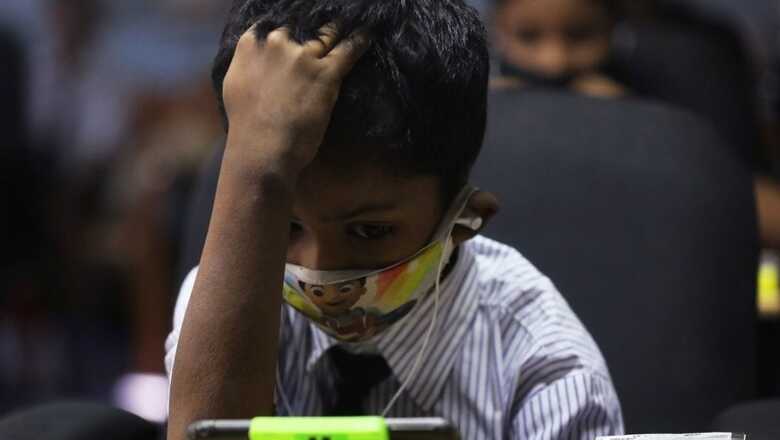
views
Of all youth in the 14-18 age group who used social media in rural India, only about half are familiar with the online safety settings. Boys, who are “more than twice as likely” to own and use a smartphone, as compared to girls are also more familiar with these settings than girls, the Annual Status of Education Report (ASER) survey released on Wednesday said.
According to the ASER report 2023 that mapped digital awareness and skills of rural youth across states, close to 90% of all youth have a smartphone in the household and know how to use it. Of those who can use a smartphone, males (43.7%) are more than twice as likely to have their own smartphone than females (19.8%).
The report titled ‘Beyond Basics’, led by Pratham Foundation, a non-profit with a focus on school education puts the spotlight on youth aged 14 to 18 years in rural India. The last time this age group was in focus was in 2017. The survey was conducted in 28 districts across 26 states, reaching a total of 34,745 youth in the age group 14-18 years. One rural district was surveyed in each major state, with the exception of Uttar Pradesh and Madhya Pradesh, where two rural districts were surveyed.
“Females are less likely to know how to use a smartphone or computer as compared to males,” the report said.
About 90% of surveyed households have smartphones. Of the surveyed youth, 94.7% were males while 89.8% of females could use a smartphone, as per the report.
“Out of the males who knew how to use smartphones, a little less than half, or 43.7%, owned a smartphone. Among females, only 19.8% out of those who knew how to use a smartphone owned one. This shows the obvious discrimination in ownership of smartphones right from age 14. The gender-based difference in ownership of devices affects some abilities,” the report stated.
The report highlighted that while 92% of these youth have smartphones, only a few own computer systems. Besides, 51% of males and 30% of females have an email address while 20% of males and 9% of females have sent an email.
“Of all youth, 9% have a computer. Of those, 85% can use it. The remaining 91% do not have a computer, of these 34% can use it,” the survey report said.
Access to smartphones is high and almost everyone knows how to use a smartphone. Usage, however, varies considerably by purpose. More than half of all young people do not have knowledge of online safety. Most use smartphones for entertainment, and about half use them for education-related activities. Few have used online services, the survey stated.
It also said that of all youth who used social media, only about half were familiar with the online safety settings that were included in the survey. Males are more likely to know about these settings than females.
Of those who have used social media in the reference week (when the survey was conducted), 52% can report/block a profile; 48% know how to make a profile private while 52% know how to change a password.
Besides, the report highlighted that 67.1% of youth across all districts could bring a smartphone (during the survey) to do digital tasks. Of these, 73% of males could bring a smartphone as compared to 62% of females. More 17-18-year-olds could bring smartphones.
According to the survey, of youth who could bring a smartphone, about 80% can find a specific video on YouTube, and among these, nearly 90% can share it with a friend. 70% of youth can browse the internet to find the answer to a question and about two-thirds can set an alarm for a specific time. A little over a third can use Google Maps to find the time taken to travel between two points.
The report concluded that across all the digital tasks, boys outperform girls. Performance on digital tasks improves with education level. The ability to do digital tasks increases with basic reading proficiency.




















Comments
0 comment